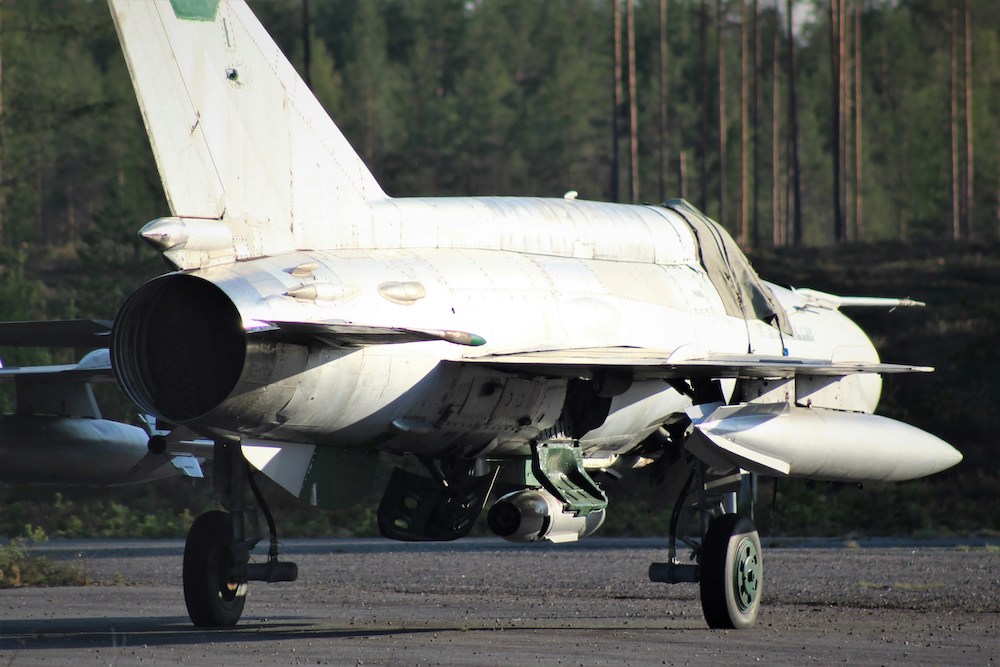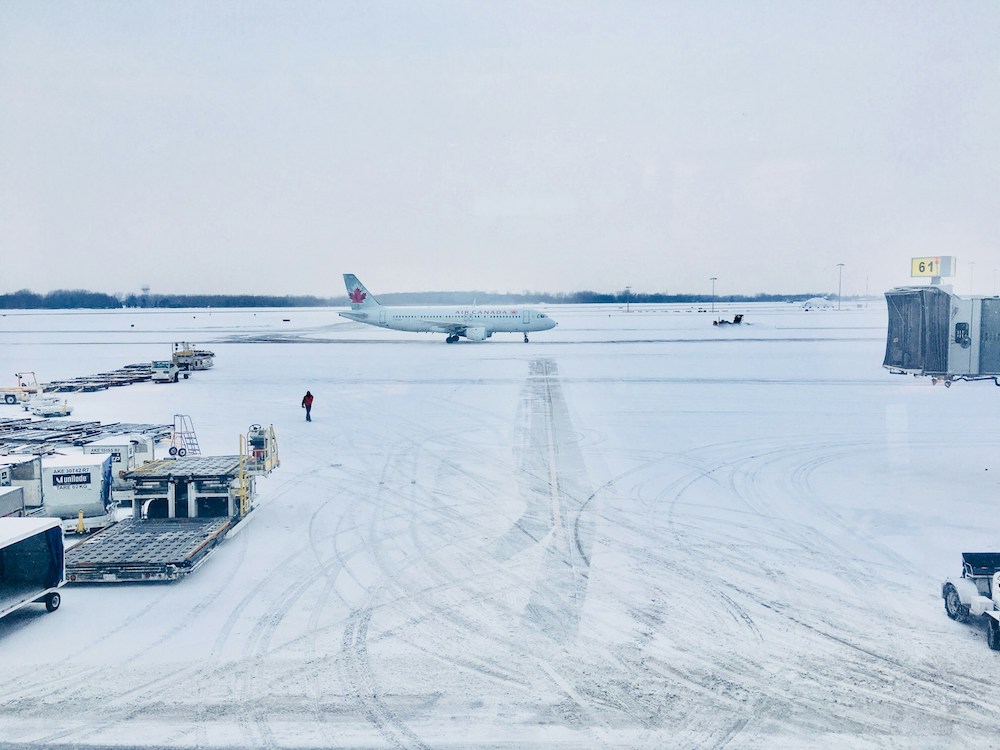
Soaring through the skies in an aircraft is an unmatched thrill. However, one must remember that such a great adventure comes with responsibilities, first and foremost, safety. Fire, though relatively rare on aircraft, is a peril that cannot be underestimated. So, having a suitable fire extinguisher in your aircraft is more than a precaution; it’s compulsory to mitigate potential deadly dangers.
In the aviation industry, where precision and safety hold utmost importance, the Federal Aviation Administration (FAA) provides invaluable guidelines to help you choose a suitable fire extinguisher. Above all else, they strongly advise the use of Halon or Halon replacement fire extinguishers. The minimum rating for large aircraft is 5B:C, while small aircraft should have a minimum rating of 2B:C. But what do these ratings mean, and which extinguishers meet these requirements?
ePlane helps answer all questions and will point you toward ready-to-order fire extinguishers for your aircraft.
Understanding Fire Types on Aircraft
Aircraft, with their intricate systems and confined spaces, are vulnerable to various fire hazards. To ensure the safety of passengers, crew, and the aircraft itself, it is necessary to have a deep understanding of the various types of fires that can occur on board. After all, fires are not a one-size-fits-all phenomenon; they vary based on the materials ignited and the conditions under which they burn.
Class A: Ordinary Combustibles
Class A fires involve combustible materials such as paper, wood, and cloth. They are the type of fires you might encounter in the cabin area of an aircraft.
Class B: Flammable Liquids
Class B fires are ignited by flammable liquids, gases, and greases like gasoline, oil, and propane. These fiery adversaries can rear their heads in the aircraft’s fuel systems, engines, or other machinery.
Class C: Electrical
The extensive presence of electrical equipment throughout a plane’s makeup makes Class C fires a real concern. Prime culprits for this type of fire include the aircraft’s wiring, fuse boxes, and motors. Fire extinguishers designed for Class C fires contain non-conductive agents that are safe to use on live electrical equipment.
Class D: Flammable Metals
Although rare in aviation, Class D fires are ignited by combustible metals such as magnesium, titanium, and potassium. Extinguishing these fires requires specialized agents and techniques.
Class K: Cooking Oils and Fats
Class K fire extinguishers are tailored for combating fires fueled by cooking oils and fats commonly found in commercial kitchens. They employ a wet chemical agent to create a foam that swiftly extinguishes the fire.
Take note, Class B and C fires are the most commonly encountered adversaries in aviation.
Types of Fire Extinguishers for Aircraft
Halon Fire Extinguishers
Halon fire extinguishers have long been the standard choice for aircraft fire suppression due to their effectiveness and suitability for aviation applications. Halon is a clean agent that works by preventing the chemical reaction that occurs during a fire. It leaves no residue, making it ideal for shielding delicate electronic equipment.
Even though Halon is categorized as a clean agent, this type of fire extinguisher has faced increasing scrutiny around its potential ecological repercussions. Halon’s classification as a chlorofluorocarbon (CFC) could negatively contribute to the depletion of the ozone layer when produced and released. Consequently, an increasing number of voices worldwide advocate for the phasing out of Halon fire extinguishers and adopting more eco-friendly alternatives. However, there is no ban or formalized regulation against the usage of this type of fire extinguisher within aircrafts.
Halotron Fire Extinguishers
Halotron fire extinguishers are the go-to replacement for Halon extinguishers in many aircraft. They are a more environmentally friendly option as they do not contain chlorine and have zero ozone depletion potential. Halotron works similarly to Halon in suppressing fires by disrupting the chemical reaction. It is suitable for confined spaces, making it a good choice for aircraft cabins and cockpits.
Dry Chemical Fire Extinguishers
Dry chemical fire extinguishers are another commonly used type in aircraft. They work well against fires caused by flammable liquids, electrical fires, and combustible solids. Dry chemical fire extinguishers mostly use monoammonium phosphate or sodium bicarbonate as their active agent.
While dry chemical extinguishers are versatile, they do have drawbacks. They leave a powdery residue that can damage sensitive equipment and can be challenging to clean up after use. Therefore, they are more commonly found in cargo holds and other aircraft areas where sensitive electronics are absent.
Water Fire Extinguishers
Water fire extinguishers are primarily used for Class A fires resulting from ordinary combustibles such as paper, wood, and fabric. They are less commonly found on aircraft due to the challenges of containing and delivering water in a confined space like an aircraft cabin. Usually, water extinguishers are only utilized in certain cargo areas or when necessary.
Carbon Dioxide (CO2) Fire Extinguishers
CO2 fire extinguishers are suited for Class B and Class C fires resulting from flammable liquids and electrical fires. They work by displacing oxygen, thus smothering the fire. CO2 extinguishers are clean agents that leave no residue, making them suitable for use around sensitive electronic equipment.
However, CO2 extinguishers can be dangerous to personnel if not used correctly. They displace oxygen, which can lead to asphyxiation in confined spaces. Proper training is essential when using CO2 extinguishers on an aircraft.
Considerations for Aircraft Fire Extinguishers
There are certain factors to consider when selecting a suitable fire extinguisher type for an aircraft to ensure the safety of passengers, crew, and the aircraft itself.
Regulatory Compliance
When picking out fire extinguishers for planes, be mindful of related rules you must follow follow. Groups like the FAA here in the US and that EASA outfit in Europe lay down the law on what kinds of extinguishers have to go where on a plane. For example, you will need to follow guidelines that specify which fire extinguisher type to use in the cabin, the cockpit, etc.
So read up on those regs and ensure any extinguishers you get are aviation-approved and meet all the standards. It’s better to take a little extra time and do it right than have things go wrong if there’s ever an emergency.
Aircraft Size and Configuration
The dimensions and layout of the aircraft significantly impact the type and quantity of fire extinguishers necessary. To guarantee swift access during a fire emergency, larger aircraft may necessitate the strategic placement of multiple extinguishers throughout the aircraft. Conversely, smaller aircraft, although equipped with fewer extinguishers, must adhere to regulatory standards.
Fire Risk Assessment
Doing a complete fire risk review before picking fire extinguishers is a good idea. Look at what specific items on the plane are particularly flammable – fuel, cargo, etc. Also, check out what might start a fire in different spots on the aircraft, as this will help you figure out how many extinguishers you need and what types for the various areas.
Accessibility and Visibility
Ensuring the accessibility of fire extinguishers for both crew members and passengers in the event of an emergency is of paramount importance. These extinguishers should feature clear labels, adequate illumination, and unobstructed access. Regular drills should also be conducted to reinforce preparedness. Providing comprehensive training is essential to ensure that all individuals on board are well-informed about the extinguisher locations and proficient in their correct usage.
Maintenance and Inspection
Proper maintenance and regular inspection of fire extinguishers are vital to their effectiveness. Aviation professionals should follow the manufacturer’s recommended maintenance schedule and conduct routine checks for signs of damage or leakage. Any extinguisher found to be compromised should be replaced immediately.
Training and Education
In order to utilize fire extinguishers safely, crew members and ground staff must obtain suitable training. Training should be continual to ensure that all employees are knowledgeable about the most recent practices and tools.
Environmental Considerations
In line with the aviation industry’s commitment to environmental sustainability, it is crucial to consider the environmental impact of fire extinguishers. Choose extinguishers with low or zero ozone depletion potential and minimal environmental impact whenever possible.
Choosing the Right Fire Extinguisher for Your Aircraft: A Quest for Safety and Efficiency
As aircraft fire safety is essential, selecting the right type of fire extinguisher is paramount. This decision should not be taken lightly, for it can distinguish between a safe landing and catastrophe in the face of adversity.
The guidance provided by the FAA, as delineated in AC 20-42D, serves as our North Star, illuminating the path toward the most suitable fire-fighting companion for our aircraft. However, remember that the extinguisher choice should be tailored and aligned with your unique aircraft’s specific needs and potential fire risks.
Halon is the heavyweight champion regarding effectiveness per pound in light of the spatial constraints and weight limitations inherent to aircraft. Yet, as aircraft operators increasingly place environmental friendliness in the forefront of decision-making, other types of fire extinguishers may rise in prominence. Halotron BrX is emerging as a promising alternative with a comparable size and efficacy, and many aircraft manufacturers already embraced this transition.
Examples of Popular Fire Extinguishers for Aircrafts
There is a wealth of different fire extinguisher options that can be found within ePlane’s aviation marketplace. To help you begin your search, below are links to some of the most popular ones:
- 74-20 fire extinguisher
- 1708337B4 fire extinguisher
- 33000027-1 fire extinguisher
- 33600005-3 fire extinguisher
- BA51015-5 fire extinguisher
- 10-61909-3 fire extinguisher
Key Takeaways About Fire Extinguishers For Your Aircrafts
In the intricate realm of aviation safety, the significance of fire extinguishers for aircraft cannot be understated. While flying offers unparalleled opportunities and freedoms, it also demands rigorous safety measures, with fire being a paramount concern. The FAA’s guidelines illuminate the path, endorsing the use of Halon and other extinguisher types. Aircraft face diverse fire threats, from combustibles in cabins to electrical fires, necessitating a thorough understanding of fire classes.
The choice of extinguishers—be it the environmentally contentious Halon, the eco-friendly Halotron, or others like dry chemical and CO2—hinges on specific aircraft needs, regulatory compliance, and environmental considerations. As aviation progresses, so does fire safety technology, with a clear shift towards sustainable solutions.
Ultimately, your choice of a fire extinguisher should be a harmonious blend of safety, efficiency, and environmental responsibility, ensuring the skies remain both thrilling and secure.
Want to Learn More About Other Aircraft Parts & Components
ePlane offers end-to-end aviation procurement solutions. To help users better understand the needs of their specific aircrafts and how to navigate the ins and outs of inventory management, we’ve put together articles including:
- Air Data Computer – How it Works, Inputs, Outputs, and Popular Aviation Parts
- Aircraft Corrosion – Filiform, Pitting & Other Corrosion Types
- Cessna 182 vs. 172 – Cruise Speed, Cabin Size & More
- Aircraft Parts Inventory Management & 8 Mistakes to Avoid
Written by Michael Olusoji
Written by Michael Olusoji
Michael Olusoji is a distinguished aviation writer with over five years of in-depth expertise.
His comprehensive research and analytical prowess have culminated in a myriad of articles that dissect the intricate facets of the aviation sector, particularly the engineering nuances of aircraft components.



